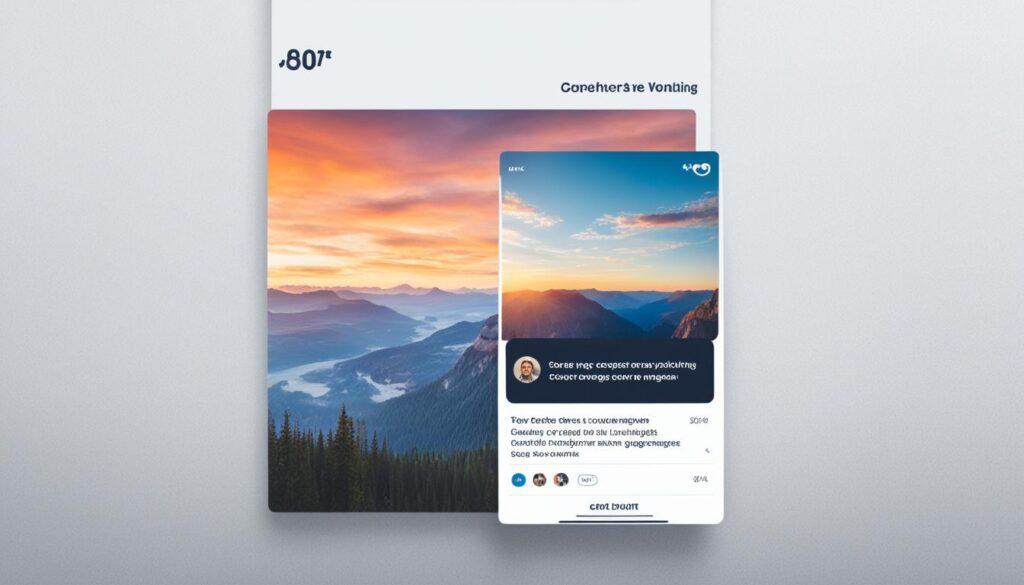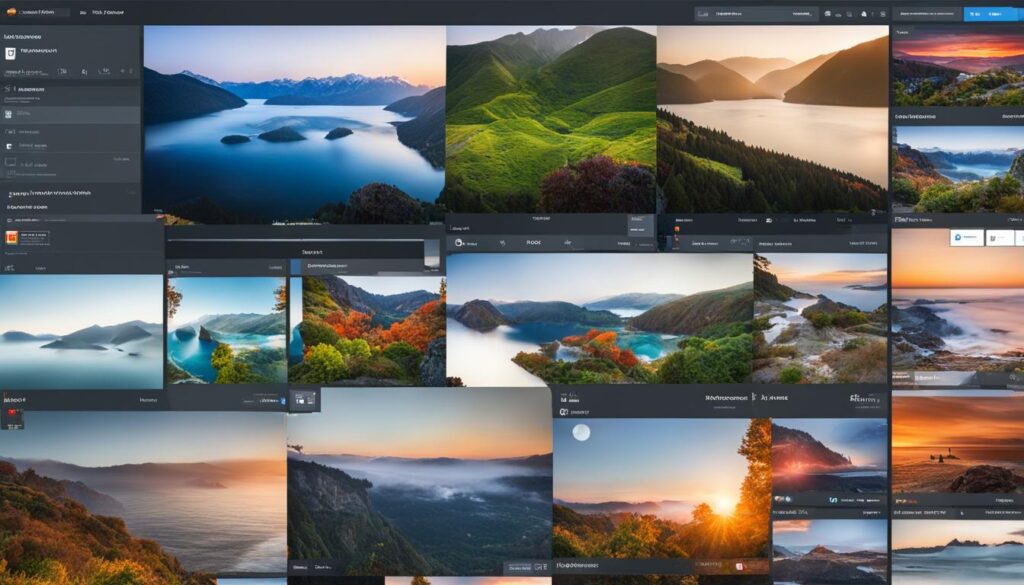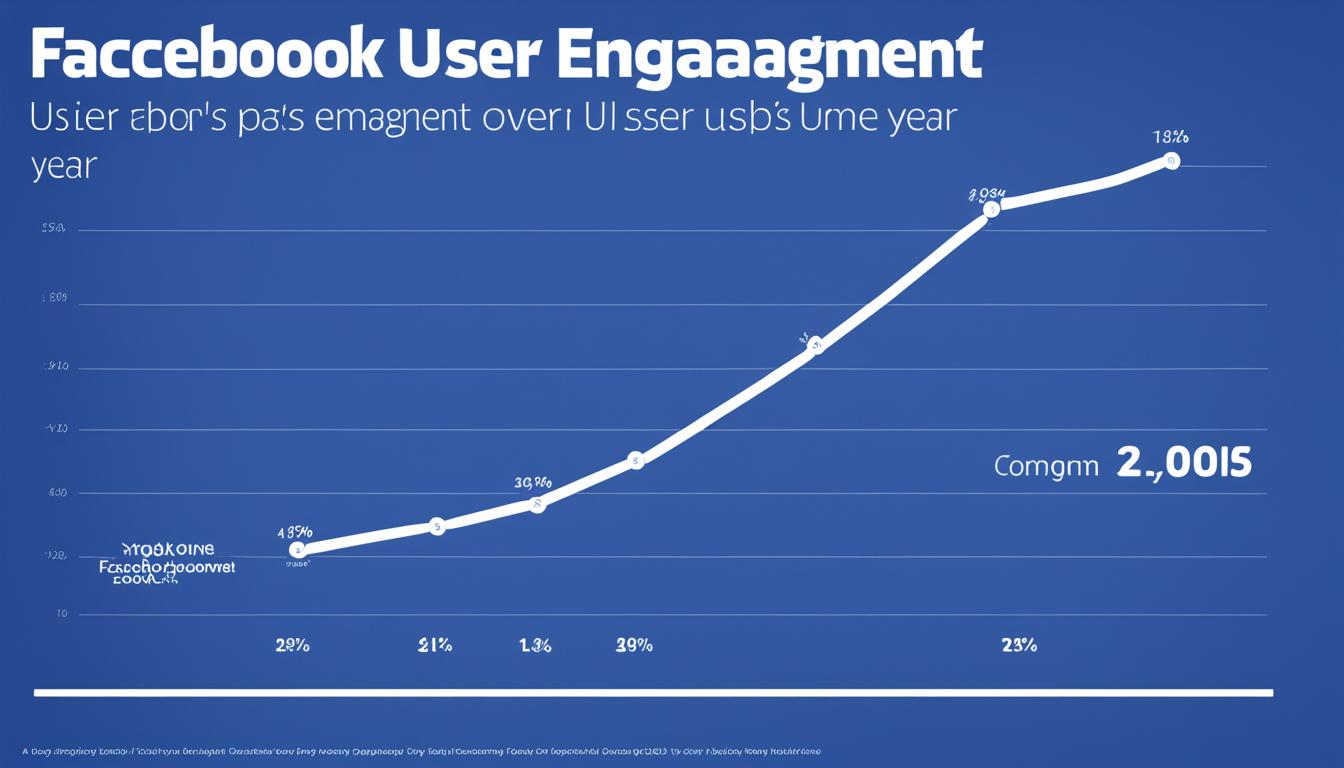In the world of social media, getting the right image size is crucial. It is essential for achieving success on social media platforms by having ideal image sizes. Whether it’s a cover photo, profile picture, or an image for a post, getting the dimensions right is crucial for various reasons.
At the heart of image sizing lies the aspect ratio, which ensures that the image maintains its proportions across different devices and platforms. Understanding the recommended image size for each social media platform is key to presenting your brand in the best possible light. With the ever-changing landscape of social media, it’s vital to stay updated with the latest guidelines and make the necessary adjustments.
Here’s a general guide to image sizes for some of the most popular social media platforms:
- Facebook:
- Profile Picture: 170 x 170 pixels on desktop, 128 x 128 on smartphones.
- Cover Photo: 820 x 312 pixels.
- Shared Images: 1200 x 630 pixels.
- Shared Links: 1200 x 628 pixels.
- Event Images: 1920 x 1080 pixels.
- Instagram:
- Profile Picture: 110 x 110 pixels.
- Square Post: 1080 x 1080 pixels.
- Portrait Post: 1080 x 1350 pixels.
- Landscape Post: 1080 x 566 pixels.
- Stories: 1080 x 1920 pixels.
- X(Twitter):
- Profile Picture: 400 x 400 pixels.
- Header Photo: 1500 x 500 pixels.
- In-Stream Photo: Minimum 440 x 220 pixels (2:1 Ratio).
- LinkedIn:
- Profile Picture: 400 x 400 pixels.
- Background Image: 1584 x 396 pixels.
- Post Image: 1200 x 1200 (square) or 1080 x 1350 (portrait).
- Pinterest:
- Profile Picture: 165 x 165 pixels.
- Pins: 1000 x 1500 pixels.
- YouTube:
- Channel Profile Image: 800 x 800 pixels.
- Channel Cover Photo: 2560 x 1440 pixels.
- Video Thumbnails: 1280 x 720 pixels.
- TikTok:
- Profile Picture: 200 x 200 pixels.
- Video Size: 1080 x 1920 pixels.
Join us as we delve into the world of social media image sizes and explore their impact on image quality, brand representation, mobile responsiveness, user experience, platform guidelines, image visibility, and more. We’ll provide you with valuable insights and practical tips to ensure your visual content stands out and grabs attention in 2024 and beyond.
Key Takeaways:
- Using the correct image size is crucial for social media success
- Aspect ratio ensures consistent proportions across platforms and devices
- Stay updated with the recommended image sizes for each social media platform
- Optimizing image size enhances image quality and brand representation
- Mobile responsiveness and user experience are influenced by image sizing
What are the recommended image sizes for different social media platforms?
Facebook Image Sizes: Cover Photo, Profile Picture, and Post Images
When it comes to Facebook, using the right image sizes is crucial for creating visually appealing profiles and posts. Here are the recommended image sizes for different elements on Facebook:
Cover Photo: The recommended size for the cover photo is 820 pixels wide by 312 pixels tall. This large and prominently displayed image provides an excellent opportunity to showcase your brand or highlight a specific message.
Profile Picture: The standard size for a Facebook profile picture is 180 pixels by 180 pixels. It will appear as a square image and is a key element in establishing your brand identity.
Post Images: To ensure your images look their best in Facebook posts, use a size of 1200 pixels by 630 pixels. This size provides the ideal ratio for optimal visibility in the news feed and on your page.
Instagram Image Sizes: Stories, Profile Image, and Posts
Instagram is a highly visual platform, so it’s essential to make sure your images fit the recommended sizes. Here are the image size guidelines for different elements on Instagram:
Stories: For Instagram stories, use an image size of 1080 pixels by 1920 pixels. This size ensures that your stories appear crisp and clear on both mobile devices and desktop screens.
Profile Image: The recommended size for an Instagram profile picture is 110 pixels by 110 pixels. It is displayed as a circle and serves as the visual representation of your account.
Posts: The ideal image size for Instagram posts is 1080 pixels by 1080 pixels. This square format is the standard size for images in the feed, allowing your content to stand out and maintain its quality.

Twitter Image Sizes: Profile Picture and Post Images
Twitter is a fast-paced platform, and using the correct image sizes is essential to grab users’ attention. Here are the recommended image sizes for Twitter:
Profile Picture: The ideal size for a Twitter profile picture is 400 pixels by 400 pixels. It will be displayed as a circle and appears alongside your tweets and profile information.
Post Images: To make your images stand out in Twitter posts, use a size of 1200 pixels by 675 pixels. This aspect ratio ensures that your images are optimized for the feed and look great on both desktop and mobile devices.

LinkedIn Image Sizes: Profile Picture, Cover Image, and Posts
LinkedIn is a professional networking platform where image quality plays a vital role in establishing credibility. Here are the recommended image sizes for different elements on LinkedIn:
Profile Picture: The recommended size for a LinkedIn profile picture is 400 pixels by 400 pixels. It should be a professional headshot that represents you as a business professional.
Cover Image: The ideal size for a LinkedIn cover image is 1584 pixels by 396 pixels. This large banner-like image provides an excellent opportunity to showcase your personal brand or highlight your professional achievements.
Posts: When sharing images in LinkedIn posts, use a size of 1200 pixels by 627 pixels. This size ensures that your images are displayed properly and visually engaging in the feed.

Pinterest Image Sizes: Profile Picture, Cover Image, and Pins
Pinterest is a visual discovery platform where images play a crucial role in attracting and engaging users. Here are the recommended image sizes for Pinterest:
Profile Picture: The recommended size for a Pinterest profile picture is 165 pixels by 165 pixels. It will appear as a circle and represents your branding on the platform.
Cover Image: The ideal size for a Pinterest cover image is 800 pixels by 450 pixels. This image appears at the top of your profile and serves as a visually appealing introduction to your Pinterest boards.
Pins: To ensure your pins look their best on Pinterest, use an image size of 1000 pixels by 1500 pixels. This vertical format is commonly used on Pinterest and is optimized for the platform’s visual discovery experience.

Why is it important to use the correct image size on social media?
In today’s digital age, visual content plays a crucial role in capturing the attention of social media users. Images are not only eye-catching but also convey messages, evoke emotions, and build brand identity. However, it’s not just the content of the image that matters; the size of the image is equally important. Using the correct image size on social media platforms has a profound impact on various aspects of your online presence and marketing strategy.
Impact on Image Quality and Brand Representation
Using the correct image size ensures optimal image quality, avoiding pixelation, distortion, or blurriness. High-quality images not only improve the overall aesthetics of your social media profiles but also enhance the professionalism and credibility of your brand. By presenting visually appealing images, you can effectively represent your brand and increase audience engagement.
Mobile Responsiveness and User Experience
In today’s mobile-first world, where a significant portion of social media users access platforms via smartphones and tablets, it is crucial to prioritize mobile responsiveness. Using the correct image size ensures that your images are displayed correctly and load quickly on mobile devices, providing a seamless and enjoyable user experience. This improves user engagement and encourages users to spend more time on your social media profiles.
Adherence to Platform Guidelines and Image Visibility
Social media platforms have specific guidelines and recommendations for image sizes. By following these guidelines, you ensure that your images are displayed as intended and avoid cropping or distortion. Moreover, using the correct image size improves image visibility, preventing important details from being cut off and ensuring your images stand out in a crowded timeline or feed.
Consistency across Different Social Media Platforms
Consistency is key to building a strong brand presence across multiple social media platforms. When you use the same image size across your profiles, it creates a cohesive visual identity and reinforces brand recognition. Consistency in image size also enables you to repurpose content easily and ensures a seamless transition between platforms, delivering a consistent brand experience to your audience.
SEO and Searchability of Visual Content
Search engines not only crawl text-based content but also consider visual content. Using the correct image size has SEO benefits, as search engines can better understand and index your images. By optimizing your images for size and relevance, you increase the chances of your visual content appearing in search results, driving organic traffic to your social media profiles and website.

| Key Considerations | Benefits |
|---|---|
| Image Quality | Enhanced aesthetics, professional brand representation |
| Mobile Responsiveness | Improved user experience, increased engagement |
| Platform Guidelines | Correct display, improved image visibility |
| Consistency | Strong brand presence, easy content repurposing |
| SEO and Searchability | Improved visibility, increased organic traffic |
How to resize images for various social media platforms?
Resizing images for social media platforms is essential to ensure optimal display and engagement. In this section, we will explore different methods and tools to resize images effectively. Whether you want to resize an image for a profile picture, a post, or a cover photo, we’ve got you covered.
Using Online Image Editing Tools
Online image editing tools provide a convenient and user-friendly way to resize images for social media. Platforms like Canva, Adobe Spark, and Pixlr offer intuitive interfaces that allow you to upload an image and resize it to the desired dimensions. These tools often provide pre-defined templates for popular social media platforms, making it easy to select the appropriate size for your image.
Understanding Aspect Ratios and Dimension Requirements
Aspect ratios and dimension requirements play a crucial role in resizing images for social media. Different platforms have specific aspect ratio guidelines that determine how an image will appear on various devices. For example, Instagram’s recommended aspect ratio is 1:1 for square images and 4:5 for vertical images. Understanding these requirements will help you resize your images without distortion or cropping.
Utilizing Built-in Platform Features for Image Adjustment
Social media platforms often have built-in features that allow you to adjust and resize images directly within the platform. For instance, Facebook’s image adjustment tool lets you crop, resize, and apply filters to your images before posting them. This eliminates the need for external software and streamlines the resizing process.
Considerations for Mobile vs Desktop Viewing
When resizing images for social media, it’s crucial to consider how they will appear on both mobile and desktop devices. Optimize your images for mobile viewing by ensuring they are not too large, as this can affect loading times. Pay attention to important elements within the image to ensure they remain visible and impactful, regardless of the device used to view them.

Optimizing File Size without Compromising Quality
While resizing images, it’s important to optimize the file size without sacrificing quality. Large file sizes can lead to slower loading times and may deter users from engaging with your content. Use compression techniques, such as saving images in web-friendly formats (JPEG, PNG), lowering image resolution, or removing unnecessary metadata. This will help maintain image quality while reducing file size.
What are the latest updates in image sizes for 2024 on popular social media platforms?
In this section, we will discuss the latest updates in image sizes for popular social media platforms in 2024. It is essential for brands and content creators to stay up-to-date with the ever-changing image size requirements on social media platforms to ensure optimal visibility and engagement. Understanding the changes in image size requirements will enable brands to adapt their strategies and maintain a strong online presence.
Insights into Changes in Image Size Requirements
Platforms like Facebook, Instagram, Twitter, LinkedIn, and Pinterest regularly adjust their image size guidelines to improve user experience and accommodate technological advancements. These updates aim to optimize the appearance of images on various devices and screens, including smartphones, tablets, and desktops.
To provide accurate insights into the changes in image size requirements, we will delve into each platform and discuss the specific modifications to image sizes for profile pictures, cover images, posts, stories, and pins. By understanding these changes, brands can ensure their visual content stands out and aligns with the platform’s recommended sizes.
Implications for Brand and Content Strategy
The latest updates in image sizes have significant implications for brand strategy and content creation. Brands need to consider how the updated image size requirements impact the overall visual representation of their brand, including consistency across platforms and maintaining a cohesive visual identity.
Content creators, social media managers, and marketers must also adapt their content strategy to accommodate the updated image sizes. By understanding the new guidelines, brands can optimize their visual assets and create content that effectively resonates with their target audience.
Preparation and Transition Strategies for Updated Guidelines
Brands should proactively prepare for the updated image size guidelines by revisiting their visual content library and ensuring it aligns with the new requirements. This may involve resizing existing images, redesigning cover photos, and optimizing visuals for a seamless transition to the updated guidelines.
To facilitate a smooth transition, brands can utilize online image editing tools and resources to resize and optimize their images. They can also leverage built-in platform features and templates offered by social media platforms to adjust their visuals without compromising quality or brand identity.
Impact on Visual Storytelling and Engagement Metrics
The updated image sizes have a profound impact on visual storytelling and engagement metrics. With the right image dimensions, brands can effectively convey their brand story, evoke emotions, and captivate their audience. Visual content that aligns with the recommended image sizes improves user experience and engagement metrics, such as likes, shares, comments, and click-through rates.
By understanding and implementing the latest image size requirements, brands can optimize their visual storytelling strategies and maximize the impact of their content on social media platforms.
Comparison of Current vs Updated Image Sizes
To provide a clear understanding of the updates in image sizes, we will compare the current image sizes with the updated ones. This comparison will help brands identify the specific changes and ensure a smooth transition to the updated guidelines.
Below is a table showcasing the comparison of the current and updated image sizes for popular social media platforms:
| Platform | Image Type | Current Size | Updated Size |
|---|---|---|---|
| Cover Photo | 851×315 pixels | 1080×608 pixels | |
| Profile Picture | 150×150 pixels | 180×180 pixels | |
| Post Image | 1200×628 pixels | 1200×675 pixels | |
| Cover Image | 1584×396 pixels | 1584×396 pixels | |
| Pins | 600×900 pixels | 1000×1500 pixels |
Note: These are just a few examples. It is crucial for brands to review and adjust their visuals based on the specific requirements of each platform.

By understanding the latest updates in image sizes for popular social media platforms, brands can ensure their visual content is optimized for maximum impact, engagement, and brand representation in 2024 and beyond.
How does using the right image sizes benefit social media marketing and branding?
Using the correct image sizes on social media platforms offers numerous benefits for your marketing and branding efforts. Let’s explore how it can enhance your visual aesthetics, brand identity, engagement, click-through rates, conversions, consistent brand representation across multiple platforms, effective integration of visual content in marketing campaigns, and optimized user experience and platform compatibility.
Enhanced Visual Aesthetics and Brand Identity
Optimizing image sizes ensures that your visuals appear crisp, clear, and visually stunning, enhancing the overall aesthetics of your social media presence. By maintaining consistent image sizes, you can create a cohesive brand identity, reinforcing your brand message and values through visual elements.
Improved Engagement, Click-Through Rates, and Conversions
Using the right image sizes has a direct impact on engagement metrics such as likes, comments, shares, and click-through rates. Well-optimized visuals can grab users’ attention, encourage them to take action, and ultimately lead to higher conversion rates. Visuals that are properly sized and visually appealing have a better chance of capturing the interest and curiosity of your target audience.
Consistent Brand Representation Across Multiple Platforms
With the variety of social media platforms available, maintaining a consistent brand image across all of them is crucial for building brand recognition and establishing a strong brand presence. By using the right image sizes, you ensure that your brand is represented consistently across different platforms, reinforcing your brand identity and making it easily recognizable.
Effective Integration of Visual Content in Marketing Campaigns
Visual content plays a vital role in marketing campaigns, capturing attention and conveying messages quickly and effectively. By using the right image sizes, you can seamlessly integrate visuals into your marketing campaigns, creating visually engaging content that resonates with your target audience and drives desired actions.
Optimized User Experience and Platform Compatibility
By using appropriate image sizes, you provide an optimal user experience across different devices and platforms. Ensuring that your visuals are compatible and properly displayed on various screens and platforms enhances usability and prevents distorted or cropped images. This results in a seamless browsing experience for your audience, increasing their engagement and encouraging them to explore your content further.

Overall, using the right image sizes on social media platforms has a profound impact on your marketing and branding success. It enhances your visual aesthetics, strengthens your brand identity, improves engagement, click-through rates, and conversions, maintains consistent brand representation across multiple platforms, allows for effective integration of visual content in marketing campaigns, and ensures an optimized user experience and platform compatibility. Don’t underestimate the power of well-optimized visuals on social media!
Conclusion
In conclusion, understanding and utilizing the correct image sizes in social media is key to achieving success in your marketing and branding efforts. The 2024 update to image size guidelines emphasizes the importance of optimizing your visual content for different platforms, ensuring your images are displayed correctly and effectively.
By following the recommended image sizes, you can enhance the overall aesthetic of your social media profiles, creating a consistent and professional brand identity. This not only improves the visual appeal but also helps in building a strong online presence and attracting your target audience.
Additionally, using the right image sizes has a direct impact on engagement and click-through rates. When your images are displayed correctly, they are more likely to capture the attention of your audience and encourage them to interact with your content. This can lead to increased conversions and ultimately contribute to the success of your social media marketing efforts.
As we move forward into 2024, it is crucial to stay updated with the latest image size requirements for each social media platform. By keeping up with these guidelines and adapting to the changes, you can optimize your visual storytelling, improve engagement metrics, and stay ahead of the competition.
FAQ
What are the recommended image sizes for different social media platforms?
Facebook Image Sizes: Cover Photo (820 x 312 pixels), Profile Picture (170 x 170 pixels), and Post Images (1200 x 630 pixels). Instagram Image Sizes: Stories (1080 x 1920 pixels), Profile Image (110 x 110 pixels), and Posts (1080 x 1080 pixels). Twitter Image Sizes: Profile Picture (400 x 400 pixels) and Post Images (1024 x 512 pixels). LinkedIn Image Sizes: Profile Picture (400 x 400 pixels), Cover Image (1584 x 396 pixels), and Posts (1200 x 627 pixels). Pinterest Image Sizes: Profile Picture (165 x 165 pixels), Cover Image (800 x 450 pixels), and Pins (1000 x 1500 pixels).
Why is it important to use the correct image size on social media?
Using the correct image size ensures optimal image quality and brand representation. It also improves mobile responsiveness and user experience, helps adhere to platform guidelines and enhances image visibility. Using the recommended image sizes ensures consistency across different social media platforms and improves the SEO and searchability of visual content.
How to resize images for various social media platforms?
You can resize images for social media platforms by using online image editing tools, understanding aspect ratios and dimension requirements, utilizing built-in platform features for image adjustment, considering mobile vs. desktop viewing, and optimizing file size without compromising quality.
What are the latest updates in image sizes for 2024 on popular social media platforms?
The latest updates in image sizes for 2024 on popular social media platforms include changes in image size requirements. These updates have implications for brand and content strategy. It is important to prepare and transition strategies for the updated guidelines, as they impact visual storytelling and engagement metrics. It is recommended to compare current image sizes with the updated ones to ensure compliance.
How does using the right image sizes benefit social media marketing and branding?
Using the right image sizes enhances visual aesthetics and brand identity. It improves engagement, click-through rates, and conversions. Using the recommended image sizes ensures consistent brand representation across multiple platforms and enables effective integration of visual content in marketing campaigns. It also optimizes user experience and platform compatibility.










